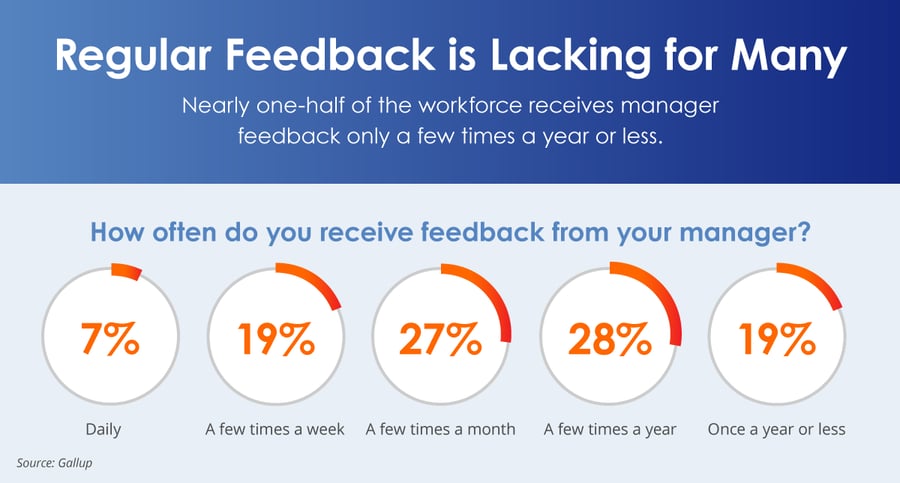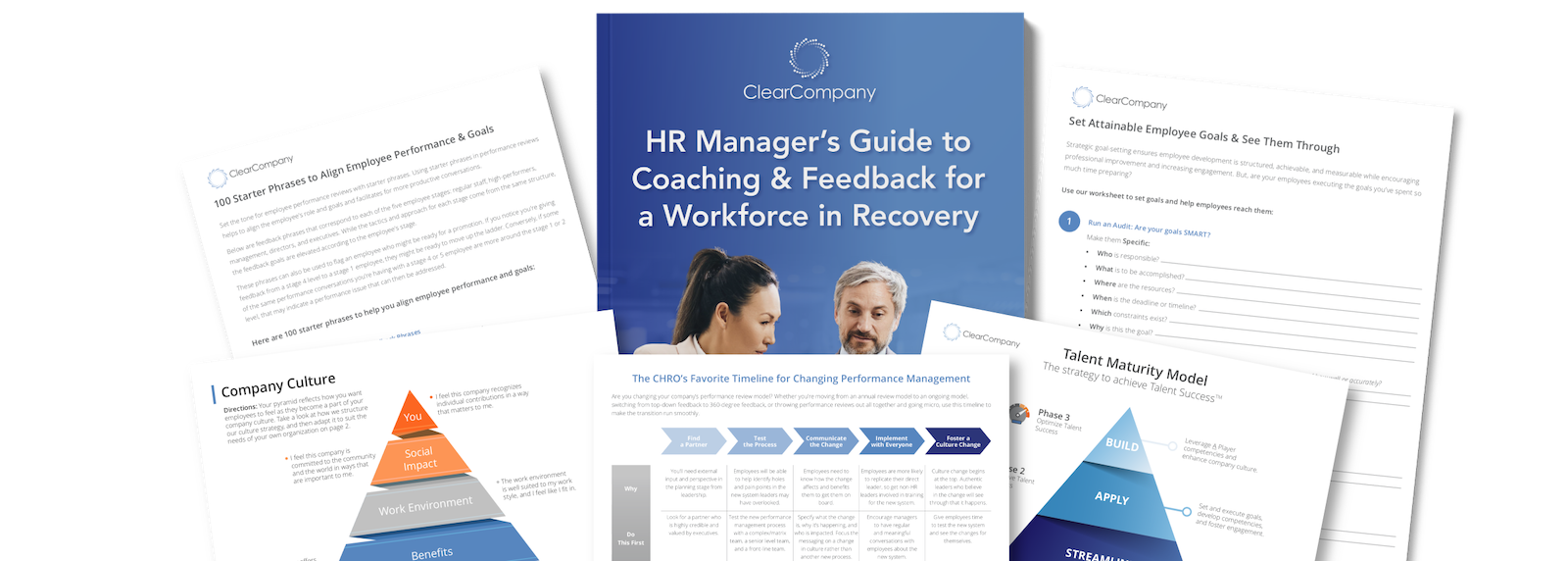Performance appraisal time is coming up, and HR professionals celebrate the opportunity to help their employees become better, more engaged, and productive workers.
Did you know…
- Annual review costs are approximately $120,000 in time spent
- Companies with engaged teams have 8.6% higher profit margins than those with disengaged teams
- 9 in 10 managers are dissatisfied with how their companies conduct annual performance reviews
There are several types of performance appraisals from which to choose:
- New Hire Reviews (30-, 60-, 90-Day Reviews)
- Competency and Roles-Based Reviews
- Time-Based Reviews
- Peer and 360 Reviews
And while many performance appraisals are performed annually, there are also considerations of time and frequency. In fact, you can conduct performance appraisals:
- Quarterly
- Bi-Annually
- Annually
- Feedback Loop (Constantly)
- Continuous, typically weekly or biweekly
Every company is different, and each has its version of the correct evaluation criteria to use in performance appraisals. Most companies go with a mixture of:
- Employee Goals
- Company Performance
- Hiring Competencies
- Earnings
- STI/LTI Compensation Schedules
And while all of those are great considerations, there are still some types of appraisals to consider. Read along to determine which performance appraisal method is right for your company and employees.
#DYK that 9 in 10 managers are dissatisfied with how their companies conduct annual #performance reviews? @ClearCompany has some tips for managers when preparing for #PerformanceAppraisals:The Full-Circle Performance Appraisal
Often called a 360-performance appraisal, these are meant to give a full and complete picture of your employee. Essentially, each employee’s coworkers (above, lateral, and below on the organizational chart) are given the opportunity to assess their performance, usually using a standardized form.
The 360-performance appraisal method is beneficial because it takes some of the pressure off management to provide the entire picture of performance and offers everyone in the organization the opportunity to assess their performance and their peers’ or leaders’ performance.
The downsides to 360-performance appraisals are getting everyone on board, avoiding the “popularity contest” mentality, and training every employee on appropriate performance feedback, including recency bias training.
Tip: If you select this type of performance appraisal, allow for extra time in order to complete it. The more voices you add to the performance conversation, the longer it will take to administer. You’ll need to train your employees on how to give appropriate feedback based on results rather than people.
The General Performance Appraisal
The general performance appraisal is also known as the goal-setting approach. Goals are set between the employee and the manager all year long. Periodically, both managers and employees assess those goals and objectives to determine if they’ve been met.
A Deloitte report released in April criticized standard performance management approaches for subjectivity and failing to focus on future improvement rather than on past performance, among other things.
Continuous goal-setting and real-time feedback are both necessary aspects of this approach. Another issue can be the lack of structure in which this type of performance appraisal is usually rooted. If you select this type of performance review, ensure it’s supported by an agreed-upon process and enabled by a technology program that helps both the manager and the employee set, track, and reach their goals.
Tip: If you select this type of performance appraisal, consider adding regular, informal performance conversations throughout the year. You can schedule quick 1-to-1s, weekly check-ins, engagement or pulse surveys, and goal tracking for your ongoing performance conversations.

The Manager Performance Appraisal
Assessing managers is a huge part of the performance management function. After all, if the managers aren’t performing well, they’re likely to impact their employees' or team’s performance. These appraisals are typically anonymous and require employees to give honest feedback about managerial performance and relational skills.
Tip: If you select this type of performance appraisal, ensure your employees understand the process of giving feedback and feel empowered to do so. Go the extra mile to make sure your managers are prepared to listen to employee feedback on their performance and act on relevant recommendations.
The Employee Self-Assessment Performance Appraisal
These can fit into many of the other appraisal types and often are included as part of a broader performance appraisal process. In this case, the employee evaluates their own performance and discusses their findings related to additional outside assessments.
These are incredibly helpful in showing any gaps between perception and actual performance. However, they must be comprehensive in order to offer real analysis. A standard rating system or Y/N structure will not yield accurate employee or leadership insights.
@ClearCompany says project-based #performance appraisals are gaining in popularity due to their more dynamic feedback. See how you can transform your #PerformanceReview strategy with these 6 tips:Tip: If you select this type of performance appraisal, coach your employees on how to assess their own performance and give them a sense of how much time they may need to dedicate to an accurate self-assessment.
The Project-Based Performance Appraisal
The project-based performance appraisal is gaining in popularity alongside Agile’s popular workplace methodology and working in “sprints.” Project appraisals allow the team members to rate and evaluate one another throughout the year (at the end of each project) to give a dynamic view of the individual’s performance.
These can help bring out different strengths in each team member and are often used when assembling new teams. Because they are project-based, they are naturally more frequent, which employees overwhelmingly prefer. Make sure the appraisals are vetted properly since according to a 2019 study from Gallup, only about 10% of U.S. workers felt engaged after receiving negative feedback on the job and nearly 30% were so put off by a negative review that they began actively looking for a new job.
Tip: If you select this type of performance appraisal, consider combining it with continuous feedback loops within your company. This appraisal is designed to ferret out strengths more than weaknesses and provide the potential for cross-training and success within an organization.
Just as there are many types of companies and employees, HR professionals have several options when it comes to performance appraisals. Whichever approach you choose, support it fully with the right performance management software.
If you need some guidance on selecting the right performance appraisal structure for your company, ClearCompany’s complete Performance Management System has all the support you need. Schedule a demo today to get the details from one of our experts.



